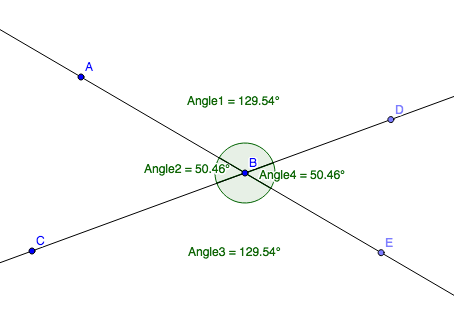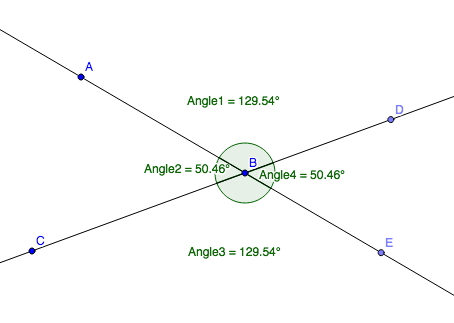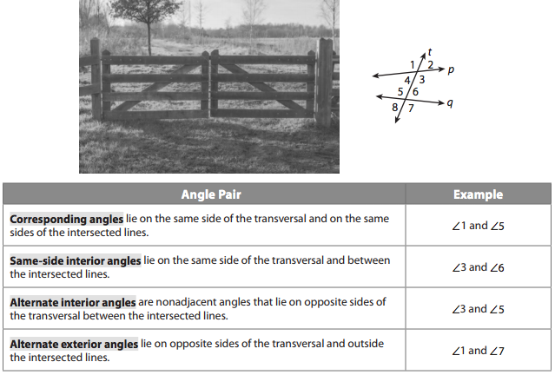Lines and Angles (Module 4)
G-CO.3.9
REMEMBER:
DEFINITION

In this diagram, which ray is the common side for the adjacent angles and ?
In the diagram below, click and drag points A and C to change the measures of the angles.
What do you notice is always true about the linear pair of angles?
DEFINITION

In the diagram below, click and drag points A and C to change the measures of the angles.
What do you notice is always true about the vertical angles?
In the diagram above, which angles are vertical angles?
Note the kinds of angles formed by 2 lines p and q, and transversal t. This diagram is also in your text (p. 175).

Same-Side Interior Angles Postulate
If two parallel lines are cut by a transversal, then the same-side interior angles (like Angle Two and Angle Three) are
Corresponding Angles Theorem
If two parallel lines are cut by a transversal, then the corresponding angles (like Angle One and Angle Four) are
Alternate Interior Angles Theorem
If two parallel lines are cut by a transversal, then the alternate interior angles (like Angle One and Angle 3) are
What is line CD?
In the diagram below, which of the following provides the best description of line CD as it relates to segment AB?
Perpendicular Lines
Click and drag point D.
While the lengths are changing, is there anything that is always true?